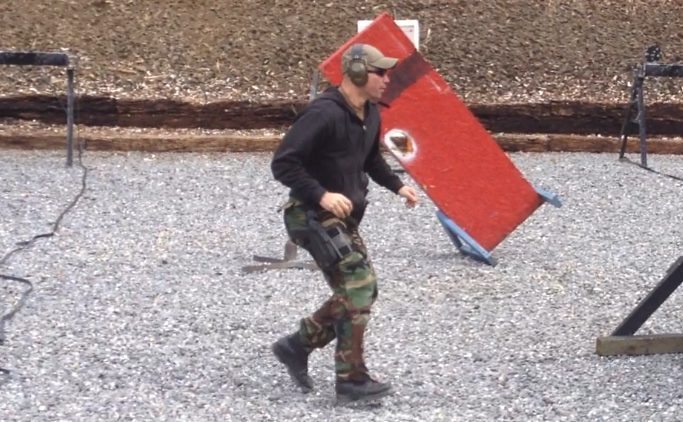Move and Shoot or Shoot and Move, which is the correct terminology? Which came first the Egg or the Chicken? It doesn’t matter, as long as I do something and know “What’s My Next Move”. Since the question has come up, let’s break it down.
First in order to shoot there is a movement: stance, grip, and draw, non-shooting hand meets gun and trigger squeeze. And then there’s the Move: move left or right, forward or backward, up or down, so I won’t be a static target, which makes me a hard target.
Each move you make should be a set up for your next move.
Some think you have to be a Ninja or like NEO, in Matrix, in order to dodge an attack. Even Neo was hit in the leg after the 50th bullet. But what may have kept him from being hit 49 times; he moved something and didn’t stand there doing nothing. Moving a half step left or right will make the difference between being shot in the head and staying in the fight. Have you ever played dodge ball? The concept is move and don’t get hit, stand still and you will get hit.
Foot work is an important component in defensive shooting. It has to be practiced over and over to make it a natural move. If you have the weapon drawing technique down then drawing on the move should be easy. Every step you make, every turn of the body gives you a new perspective of your surroundings, whether you’re inside or outside. If an attack happens you should be able to use your surroundings to your advantage.
You should be looking for an egress route or something that can be put between you and the bad guy such as a garbage can, a box, distance even. The key to all of this is getting away from the threat as quick as possible. We don’t want to get into a crack house shoot out, but find a way out or make a way out of the situation we’re in.
Is shooting in a defensive manner somewhat different than shooting at static cardboard targets? All the basic fundamentals apply except the stance, hence “move and shoot”. When shooting in the defensive mode more than likely you are being attacked and the attacker is moving in such a manner that while you’re getting your stance together the bad guy/gal is beating you, raping you and in some cases killing your family, including the dog.
A center mass shot can be made standing on one leg, lying down, leaning up against a wall, walking forward or backward, one handed or even lying on your back. So to answer the question, both are correct and should be implemented in your training sessions.
Train yourself to win at all costs. Only “YOU” can make the difference between surviving and giving up. Don’t put yourself in a position you can’t get out of, and always have a backup plan for the backup plan.


